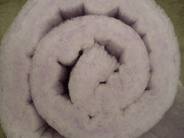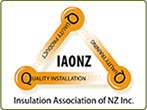Airshed:
An airshed is a geographical area in which air pollutants are measured. The country is divided into airsheds which are graded according to how bad air pollution is in each area. Clean heat is particularly important in areas of high air pollution in New Zealand which are called critical airshed areas. A showing the Top 10 polluted airsheds in New Zealand can be viewed on: www.mfe.govt.nz/publications/air/air-quality-standards-report-2008/html/page1.html
 Blankets:
Blankets:
Large rolls made from mineral fibres, including fibreglass, polyester, or rock wool, used for insulation. They are available in widths suited to standard spacings of wall studs, ceiling or floor joists.
 Cellulose:
Cellulose:
Cellulose insulation is plant fibre used to insulate wall and ceiling cavities. It is one of the oldest building insulation materials. In the past, straw, hemp, sawdust and even corn cobs have been used as the base. Today modern cellulose is manufactured using recycled newsprint with the addition of natural minerals to give the product its fire resistance and vermin-repelling properties. It is a very common form of insulation for homes and buildings around the world, including Europe, North America and Australia (20% of the insulation market). GreenChoice cellulose insulation is a popular choice for home insulation, exclusively installed by Natural Insulation.
 Energy Star:
Energy Star:
ENERGY STAR is the global mark of energy efficiency. It is typically awarded to the top 25 % most energy efficient appliances, home electronic products and office equipment in each category. Buying an ENERGY STAR qualified product saves you money by using less electricity – as well as helping the environment.
Heat Pump:
A heat pump is a machine or device that moves heat from one location to another location. Home heat pumps are compact sealed systems they can heat in the winter and both cool and dehumidify in the summer. Heat pumps are the most efficient way of using electricity to heat or cool your home. A heat pump works by extracting heat from the air outside your house and transferring it into your home. It uses the same technology as your home refrigerator which moves the heat from the foods you put into it to the outside of the fridge resulting in cold, chilled food. It can then be switched into reverse where it will act as an air conditioner cooling the interior environment of your home by extracting inside heat and transferring it to the outside.
New Zealand Building Code:
The installation of all products into buildings must comply with the NZ Building Code. The code is essentially a set of rules that specify the minimum acceptable level of safety and performance of a building and its components. It provides requirements for compliance with the Building Act when constructing a new building or altering an existing one.
R-values:
An R-value a measure of a product’s thermal performance which measures how well insulation can resist heat flow. A high R-value indicates the insulation is highly effective in slowing down the transfer of heat, thereby retaining the warmth within the home and reducing the amount of energy used for heating. The NZ Building Code (H1 section) sets thermal performance standards for buildings which are based on total R-values of products used in construction.


